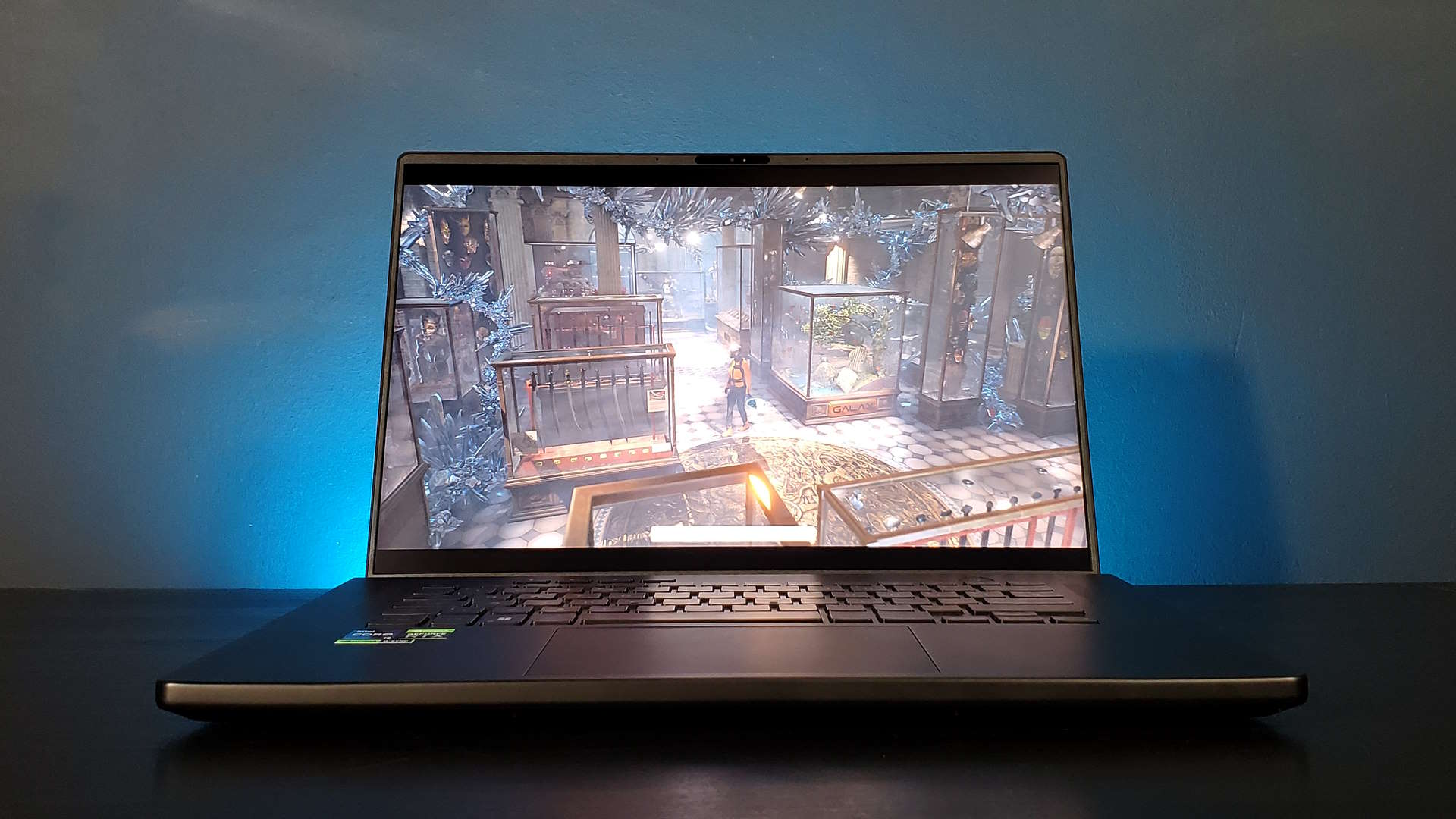Look, gaming monitors are just doing aspect ratio wrong
A pox on the house of 16:9. Let us look to the latest gaming laptops and handheld PCs with their 16:10 displays.

This month I have been mostly playing: Shadows of Doubt. The shadows have crept into my machine this month, pulling me in with its promise of gumshoe antics. And I'm dreadful at it, but it's kept me coming back each time I get bludgeoned to death by some angry pseudo cop.
This month I have been mostly testing: Graphics cards, SSDs, and new CPUs. And it turns out that we can probably all stop being excited about PCIe 5.0 SSDs.
I wish my gaming monitor was a little bit taller. I wish my lag was smaller. I wish I had an OLED that was glossy, and fast, and a six foot HDMI 2.1 cable. Yes, I am torturously paraphrasing Skee-Lo and, yes, I am aware that's probably a reference sure to fly over the heads of most people reading this. But I am above a petty desire for cultural relevance. What I am not above, however, is the desire for the perfect gaming monitor.
We've been covering and coveting a bunch of different OLED gaming monitors recently, and they are getting ever closer to a state of display nirvana that could yield, if not the perfect screen, one that gets as close as makes no odds. Well, at least for a little while anyways.
We've checked out the big bois, like the monster 48-inch Gigabyte that is perennially on offer and the similarly sized BenQ, and we've even folded the bendy Corsair Flex. I mean, that is nowhere close to the perfect monitor, but OLEDs come in a variety of flavours is what I'm saying. Though our favourite remains either Alienware's 34-inch option or Philips' similarly ultrawide Evnia with its delicious glossy coating.
But there's an itch none of them are scratching for me, and it's an itch that has been spawned from the impressive slew of gaming laptops I've been playing with over the past few months.
16:10 has gone AWOL from gaming monitors, but is creeping back into laptop life and I am most definitely here for it.
Since the combined launch of Intel and Nvidia's next-gen mobile parts, we've had a bunch of refreshed and wholly new machines come through the labs. And, no matter how you might feel about the heinous cost of them, or the limitations of form factor holding back the most powerful GPUs, some of these notebooks have presented with the best laptop screens I've ever seen.
And, though the Mini LED panels have been stunning in and of themselves when they've been used in a laptop, I've seen enough Mini LED gaming monitors to know that isn't what I want on my desktop.
No, what I actually want to transpose from those gaming laptops is the glorious 16:10 aspect ratio. 16:10 has gone AWOL from gaming monitors, but is creeping back into laptop life and I am most definitely here for it.
Keep up to date with the most important stories and the best deals, as picked by the PC Gamer team.
Gaming on the 2560 x 1600 panels of the recent Asus Zephyrus M16 and the Lenovo Legion Pro 7i has made me fall in love all over again with that extra pixel height afforded by a 16:10 screen over a traditional 16:9.
I mean, I say traditional, but that widescreen aspect ratio has not been traditional at all in PC gaming terms, and is actually a rather recent phenomenon. Relatively speaking. For the longest time the pinnacle of gaming monitors was an old 30-inch Dell Ultrasharp 3007WFP with a 2560 x 1600 native resolution. What a screen that was.

But productivity laptops have increasingly been making the switch back to taller resolutions, such as the Dell XPS and Framework notebooks, and more recently we've had gaming laptops shifting over, and even the Steam Deck and the new AOKZOE A1 Pro handhelds.
Yet no gaming monitors. There isn't a single screen with a refresh rate above 60Hz that you can buy with a 16:10 aspect ratio. And I need me some high refresh rates, because I'm a terrible trollop for a 144Hz+ display. Sure, you could say that 16:9 is all about the cinematic experience, but just give me more screen and make it snappy.
I am certainly partial to a super cinematic 21:9 ratio in an ultrawide form, but hell, I'd still appreciate a little extra pixel height on that front, too. A 3840 x 2400 screen, anyone?
The extra height isn't just good for productivity or thrashing around on a Windows desktop, it looks great in games, too. You might get the odd set of black bars in your cutscenes—who hasn't experienced that with an ultrawide gaming monitor?—but the extra screen real estate just gives you a broader vista for your chosen game world. It's great for first-person shooters, and honestly joyous for third-person games.
But, outside of some stunning gaming laptop screens there's not a hope of desktop gaming monitors getting the same treatment. Simply because it would long be a niche of panels, and financially a difficult ask trying to get manufacturers to cut their panel sheets differently when mostly they're cutting to a dominant 16:9 ratio for TVs.
So, a pipe dream it will remain on the desktop. I'll just have to stick to mobile gaming for my tiny taller displays.

Dave has been gaming since the days of Zaxxon and Lady Bug on the Colecovision, and code books for the Commodore Vic 20 (Death Race 2000!). He built his first gaming PC at the tender age of 16, and finally finished bug-fixing the Cyrix-based system around a year later. When he dropped it out of the window. He first started writing for Official PlayStation Magazine and Xbox World many decades ago, then moved onto PC Format full-time, then PC Gamer, TechRadar, and T3 among others. Now he's back, writing about the nightmarish graphics card market, CPUs with more cores than sense, gaming laptops hotter than the sun, and SSDs more capacious than a Cybertruck.

